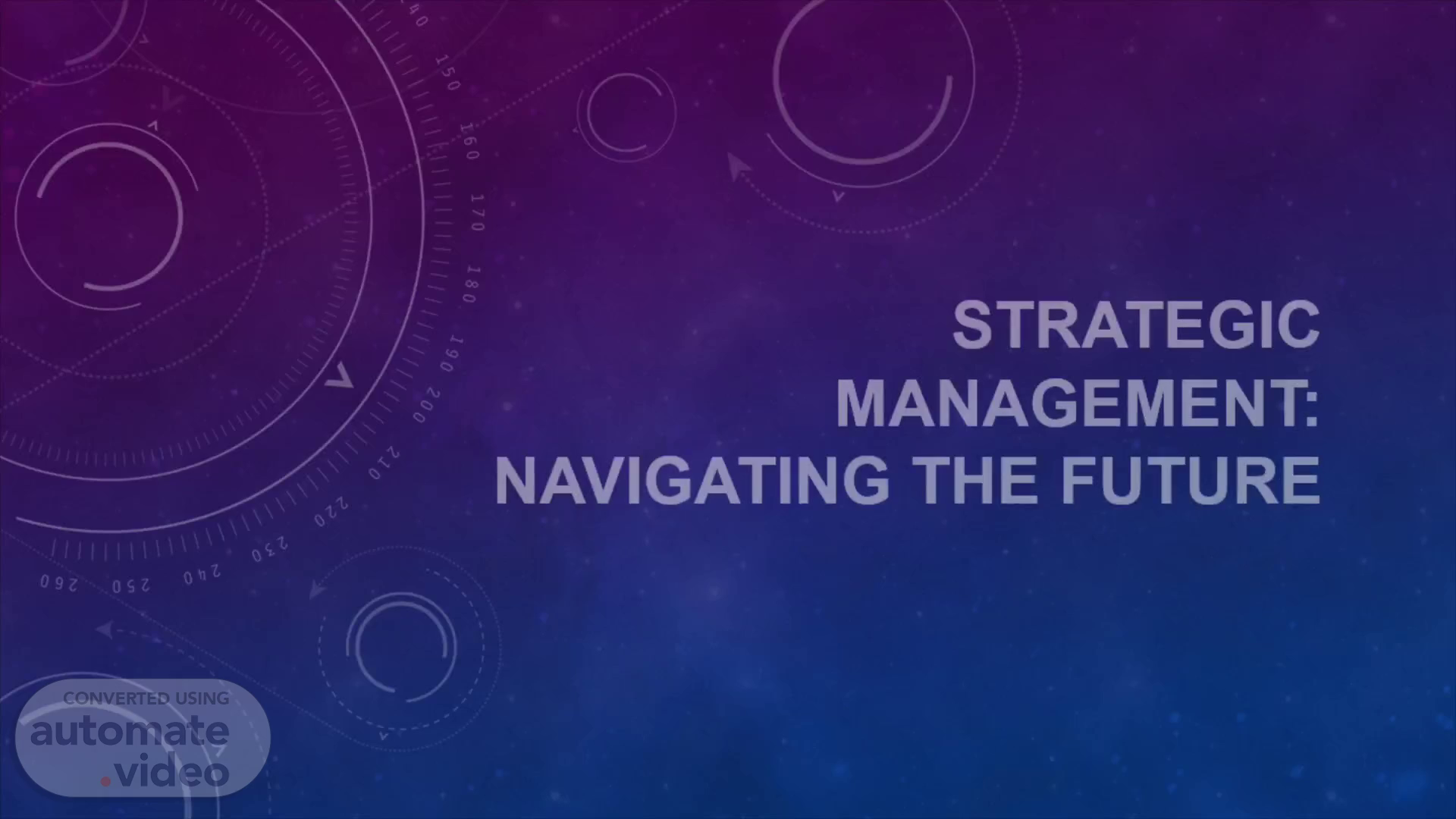
Strategic Management: Navigating the Future
Scene 1 (0s)
Strategic Management: Navigating the Future.
Scene 2 (6s)
Definition of Strategic Management. Strategic management involves setting goals and objectives for an organization It includes identifying and analyzing the internal and external factors that may impact the organization's success Strategic management also involves formulating and implementing initiatives to achieve the organization's goals.
Scene 3 (21s)
Importance of Strategic Management. Strategic management helps align the organization's resources and capabilities with its vision and mission It provides a framework for making informed decisions and prioritizing resources Effective strategic management can lead to increased competitiveness, growth, and overall success.
Scene 4 (35s)
Components of Strategic Management. Strategic planning involves setting goals, defining strategies, and creating action plans Execution refers to the implementation of the plans and initiatives Evaluation involves assessing the outcomes and making necessary adjustments.
Scene 5 (48s)
Strategic Management Process. Strategic Planning vs. Strategic Management: Strategic Planning: The process of defining an organization's direction and making decisions on allocating its resources to pursue this direction. It typically involves setting specific goals and creating detailed plans to achieve them. Strategic Management: A broader and ongoing process that encompasses planning, implementation, and evaluation. It involves not only creating a strategy but also executing it and adapting to changing circumstances..
Scene 6 (1m 9s)
Key Stages: Analysis, Formulation, Implementation, and Evaluation:.
Scene 7 (1m 27s)
Implementation: Structuring the organization to support strategies. Fostering a culture aligned with the strategy. Executing plans, allocating resources, and monitoring progress. Evaluation: Measuring performance using key performance indicators (KPIs) to assess strategy effectiveness. Using the Balanced Scorecard for a holistic evaluation. Using performance data to refine and adapt the strategy..
Scene 8 (1m 44s)
Strategic Formulation. Developing a Mission and Vision: Mission Statement: Defines the organization's purpose, its primary stakeholders, and its core activities. Vision Statement: Outlines the organization's long-term aspirations and goals, providing a motivational and inspirational direction. Setting Strategic Objectives: Establishing specific, measurable, and time-bound goals aligned with the mission and vision. These objectives serve as a clear roadmap and a basis for evaluating performance and success. Crafting Strategies: Corporate, Business, and Functional: Corporate Strategy: Decides the overall direction of the organization, addressing diversification, synergy, and the scope of activities. Business Strategy: Focuses on how a particular business unit or product line will compete in its market. Functional Strategy: Tailors strategies for departments like marketing, operations, or HR to support broader goals and ensure alignment. Strategic formulation is the foundational stage in strategic management, involving the definition of purpose, direction, and a clear plan to achieve organizational objectives..
Scene 9 (2m 24s)
Strategic Management Tools. SWOT analysis helps identify strengths, weaknesses, opportunities, and threats PESTLE analysis is a tool that helps you examine the political, economic, social, technological, legal, and environmental factors that influence your problem Other tools include Porter's Five Forces, scenario planning, and balanced scorecards.
Scene 10 (2m 41s)
Thank You.